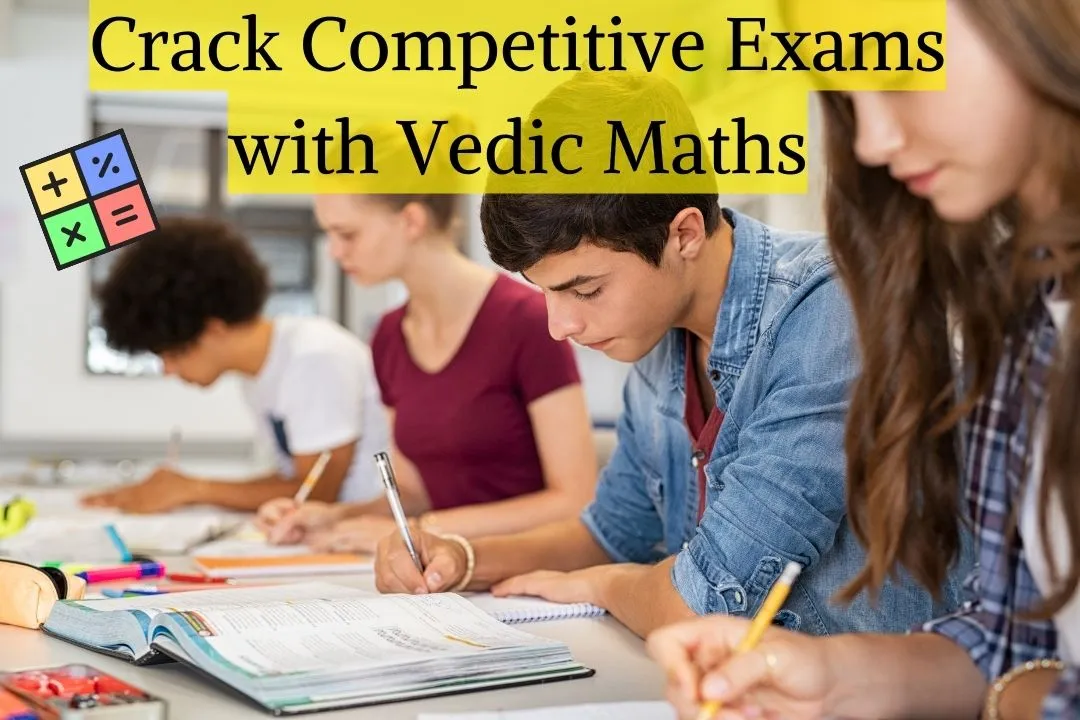Maths for Competitive Exams: A Comprehensive Guide
Introduction:
Mathematics is an integral part of various competitive exams, such as CAT (Common Admission Test), Bank PO (Probationary Officer), GRE (Graduate Record Examination), and GMAT (Graduate Management Admission Test). The quantifiable skills tested in these exams go beyond simple arithmetic, delving into areas like Data Interpretation (DI) and Logical Reasoning (LR). In this blog, we'll explore the key aspects of "Maths for Competitive Exams," including strategies, essential topics, and useful tricks.

The Foundation: Quantitative Aptitude
Understanding the Syllabus:
Competitive exams typically assess candidates on arithmetic, algebra, geometry, number theory, and other mathematical concepts. A strong foundation in these areas is crucial for success. Start by reviewing the syllabus and identifying your strengths and weaknesses.
Mastering Speed and Accuracy:
Quantitative Aptitude (Quant) tests your ability to solve mathematical problems accurately and swiftly. Practice is key to achieving proficiency. Solve a variety of problems regularly, and gradually increase the difficulty level. This not only sharpens your skills but also enhances your time management.
Unravelling Data Interpretation (DI)
Developing Analytical Skills:
DI involves interpreting data presented in various forms, such as tables, graphs, and charts. To excel, focus on honing your analytical skills. Learn to extract meaningful insights from complex datasets, identifying trends and patterns efficiently.
Practical Application:
Connect the theoretical knowledge of mathematics with real-world scenarios. DI often involves solving problems based on economic indicators, business reports, and statistical data. This practical application enhances your ability to apply mathematical concepts to different situations.
The Puzzle of Logical Reasoning (LR)
Logical Thinking:
LR evaluates your ability to analyse and solve complex problems using logical reasoning. Engage in puzzles, brain teasers, and logical games to develop your logical thinking skills. This will not only improve your LR performance but also enhance problem-solving abilities.
Systematic Approach:
Approach LR problems systematically. Break down complex scenarios into smaller, manageable parts. Develop a step-by-step process to solve problems efficiently, ensuring you don't miss any crucial information.
Math Tricks for Competitive Exams
Shortcut Techniques:
In the time-constrained environment of competitive exams, knowing shortcut techniques can make a significant difference. Learn tricks for quick mental calculations, simplifying complex problems, and identifying patterns. These techniques can save precious time during the exam.Vedic Mathematics:
Explore Vedic math techniques for quicker calculations. Methods like "Vertically and Crosswise" multiplication can save time in exams. By this method you can get your answer in one step. Vedic maths for competitive exams always useful. Let's explore some more Vedic Maths Techniques below-
Multiplying a number by 11:
To multiplying a number by 11 , To multiply 11 by a 2-digit number add the two digits and place the sum in between the digits For example:- 45 x 11 = 4 (4+5) 5 = 495
Squaring Numbers Ending in 5:
Example: 25^2 = (2 × 3) (5 x 5) = 625.
Use concept of half:
10 is a base number and we know that multiplying any number by 10 is very easy. We just add one 0 at the end of that number. For example:- 25 x 10 = 250;
Note that, 10 can be written as 2 x 5.
So, any number multiplied by 5 is equivalent to multiplying the number by 10 and halving the result.
When multiplying a number by numbers like 5 or 50, it's often quicker to halve the numbers involved. For example:- to multiply 48 by 5, 5 = 10/2, so, halve 48 = 24 then 24 x 10 = 240.
Learn divisibility rules for common numbers. For instance, If a number is an even number and ends in 0, 2, 4, 6 or 8, it is divided by 2. For example:- 20,42,76, 98 these all numbers are divisible by 2.
A number is divisible by 3 if the sum of its digits is divisible by 3, for example:- 15 is divisible by 3 , 1+5 = 6, 6/3 = 2;
If the last digit is 0 or 5, it is divisible by 5; For example:- 40, 85 ,90, 125 all the numbers are divisible by 5.
And a number is divisible by 9 if the sum of its digits is divisible by 9. For example:- 72 is divisible by 9, 7+2 = 9, 9/9= 1.
If the final digit of the number is 0, it is divisible by 10. Ex:- 20, 200, 40. 140 all the numbers are divisible by 10.
Shortcut for Percentage Increase/Decrease:
Percentage is relative value indicating hundredth parts
Now a % of b is mathematically expressed as a x b / 100
The percentage increase is equal to the subtraction of the original number from a new number, divided by the original number and multiplied by 100.% increase = [(New number – Original number)/Original number] x 100
where,
increase in number = New number – original number
Similarly, a percentage decrease is equal to the subtraction of a new number from the original number, divided by the original number and multiplied by 100.
% decrease = [(Original number – New number)/Original number] x 100Where decrease in number = Original number – New number.
Digit Sum:
Digit sum of a number is the sum of all the digits of the number followed by the addition of digits of the results till a single digit answer is obtained as below.
234156758 = 2+3+4+1+5+6+7+5+8= 41 = 4+1 = 5. We can use digit sum rule in Addition, subtraction , multiplication ,etc.
Digit sum in Multiplication
235 x 45 = 10575
We will check this using the Digit Sum rule of Multiplication.
Digit sum of 235 = 2+3+5 = 10 = 1+0 = 1 and digit sum of 45 = 4 + 5 = 9
Product of the digit sums = 1 × 9 = 9 –> Digit-sum = 9.
Digit-sum of 10575 is = 1 + 0 + 5 + 7+ 5 = 18 = 1 + 8 = 9.
So, Digit sum L.H.S = Digit-sum R.H.S = 9
In competitive exams this important concept is very helpful to solve questions. :
Tailoring Strategies for Specific Exams
CAT - Mastering Speed and Accuracy:
Bank PO exams often emphasize both Quant and DI. Strike a balance in your preparation by allocating sufficient time to each. Develop a strategy to tackle DI sets efficiently, complementing your strong quantitative skills.
GRE and GMAT incorporate Quantitative Reasoning sections that require a holistic approach. Understand the context of the problems, as these exams often assess your ability to apply mathematical concepts in diverse scenarios. Practice time management to handle both sections effectively.
Conclusion:
In conclusion, "Maths for Competitive Exams" demands a strategic and comprehensive approach. Develop a structured study plan, master the fundamental concepts, and employ time-saving tricks to maximize your performance. With consistent practice and a focused mindset, you can confidently navigate the mathematical challenges of various competitive exams.


